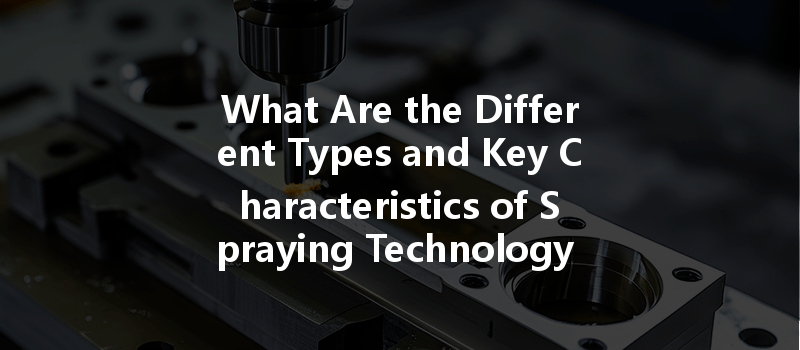Did you know that over 70% of manufacturers consider the efficiency of surface finishing processes as a critical factor for their production lines? In the world of CNC machining, where precision and detail are paramount, spraying technologies have emerged as transformative solutions that not only enhance product quality but also streamline manufacturing processes. So, what exactly are the types and characteristics of spraying technology in CNC machining, and how can they revolutionize your manufacturing practices?
In this comprehensive guide, we’ll delve deep into the various types of spraying technologies used in CNC machining, dissect their characteristics, explore their applications, and discuss the challenges they address. Whether you’re a manufacturer seeking to enhance surface finishes, an engineer looking to understand the nuances of spraying techniques, or simply an enthusiast eager to explore new innovations, this blog is tailored for you. Let’s embark on this journey to uncover the world of spraying technology!
Understanding Spraying Technology
Spraying technologies in CNC machining involve the application of materials onto surfaces using various methods, including aerosol, high-pressure, or electrostatic techniques. The primary goal is to achieve uniform coverage, enhance adhesion, and maximize material performance while minimizing waste. With the right spraying technology, manufacturers can achieve intricate designs, improve surface finishes, and enhance product durability.
Types of Spraying Technology
Air spraying is one of the most traditional and widely-used methods in industrial applications. It involves using compressed air to atomize liquid coatings into fine particles. The advantages and characteristics of air spray include:
Airless spray technology operates without compressed air, relying on high pressure to atomize the coating. This method is notably prevalent in applications requiring a thick material layer. Some key characteristics include:
Electrostatic spray technology utilizes an electrical charge to attract particles to a surface, ensuring even coating and reducing waste. Key benefits are:
HVLP spraying combines high volume and low pressure to achieve efficient atomization of coatings. This method prevents overspray and provides finely controlled application. Characteristics include:
Aerosol spray technology uses pressurized containers to dispense liquids. Although often seen in consumer products, it finds utility in CNC machining for small applications. Its features are:

Essential Characteristics of Spraying Technology
Applications of Spraying Technology in CNC Machining
Spraying technologies have gained momentum across various sectors within CNC machining, such as:
Challenges and Solutions with Spraying Technology
One of the persistent challenges in spraying technology is material wastage due to overspray. To mitigate this:
Spraying processes often result in the emission of volatile organic compounds (VOCs) and other harmful pollutants. Potential solutions include:
Achieving an exceptional finish also relies heavily on the quality of surface preparation. To address preparation challenges:
In conclusion, spraying technology plays a crucial role in CNC machining, providing effective solutions for surface finishing and enhancing overall product quality. We explored various types of spraying technologies, including air spray, airless spray, electrostatic spray, HVLP, and aerosol spray, alongside their unique characteristics and applications. Each technology offers distinct advantages, whether it’s speed, efficiency, or versatility, that can significantly impact your manufacturing processes.
As we wrap up this exploration, it’s imperative to recognize that adopting the right spraying technology can elevate your manufacturing capabilities, leading to increased productivity, reduced environmental impact, and higher customer satisfaction.
This blog serves as a vital resource for understanding the nuances of spraying technology in CNC machining. It empowers manufacturers, engineers, and decision-makers to optimize their processes, meet industry standards, and drive innovation forward. As the landscape of manufacturing continues to evolve, embracing these technologies is not only worth considering; it is essential for staying competitive in an intricate market.
Thank you for joining us on this journey through the world of spraying technology. We hope this guide inspires you to rethink your approach to surface finishing and motivates you to explore the exciting innovations that lie ahead!






